Samuel F.B. Morse – the Progenitor of the Text Message


“Kaboom!” Rick’s heart was racing – there was no time now. He heard his mom’s screams to get out of the house and run, but Rick’s body wouldn’t obey. It was January 20, 1835 and the Cosigüina volcano had just erupted. The Cosigüina was 500 meters deep and deadly. It must be a dream, he thought to himself, only it wasn’t. If there was some sort of system that could have notified him earlier to evacuate, maybe there could be a chance he could get to his 13th birthday which was in 2 days. Unfortunately, the year was 1835, there would be no system to enable speedy contact… and Rick was stuck running for his life. Now Rick was one of the fastest kids in the city of Potosí – he could outrun almost anything, except a volcano. Even as fast as Rick ran, the volcano seemed to be getting closer. It didn’t help that every time he looked back he saw his beautiful beach town getting destroyed by a single touch from the lava. In fairy tales there is always a happy ending. Alas, this isn’t a fairytale: Rick tripped on a branch in the ground and for the last time heard his mother calling his name as the red hot lava swallowed him whole.
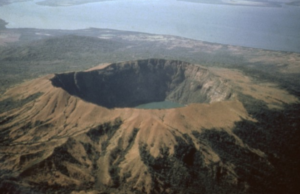

In 1837, Samuel F.B. Morse, Joseph Henry, and Alfred Vail teamed up to create an electrical telegraph system. This ingenious system sent electrical currents through wires, which then could be received by electromagnets so the person at the other end could get the message. Not only did Mr. Morse invent the telegraph, but in 1844 he invented Morse Code which could transmit the message by using only pulses and the silence in between the pulses, and sent the first message from Washington, D.C., all the way to Baltimore, Maryland. Twenty-two years later, in 1866, a telegraph line was laid from the U.S across the Atlantic Ocean to Europe. Cyrus West Field 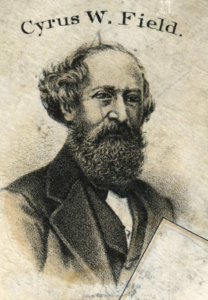 was responsible for the idea of trying to create a telegraph line from the U.S across the Atlantic Ocean. Cyrus tried four times to build, and four times he failed. Finally, with the help of American and British ships, the fifth time was the charm and it was built in 1858. It was not until 1866 though, that the Great Eastern, a British ship, ended up laying the first permanent telegraph line across the Atlantic Ocean.
was responsible for the idea of trying to create a telegraph line from the U.S across the Atlantic Ocean. Cyrus tried four times to build, and four times he failed. Finally, with the help of American and British ships, the fifth time was the charm and it was built in 1858. It was not until 1866 though, that the Great Eastern, a British ship, ended up laying the first permanent telegraph line across the Atlantic Ocean.
For an idea of its importance at the time, it wasn’t until 1894 that Guglielmo Marconi worked hard to adapt a new way of communication. His invention went from a lab experiment to an essential communication system and what was the first wireless telegraph system. In other words, after 1894, ships were able to send each other SOS signals or other Morse Code signals via radio, but not before then. Before then, they would have had to string lines between the ships – and imagine a sea bobbing with buoys which were there to hold the telegraph lines?

Mr. Marconi
In 1844, a new code came to be, and that was American Morse Code or Landline Morse Code. The difference between American Morse Code and Morse Code is that it had combinations of short dashes and dots for all the letters of the alphabet, while Morse Code used patterns of dots and spaces. Morse Code needs a talented listener. Later in 1865, when the transatlantic cable was successfully laid and transmitted, American Morse got a new name: International Morse Code.

A short-cut tool for busy telegraphers
When Samuel Morse was faced with a barrier, he always seemed to find a way around, which was a way to discover through simplifying. For example, Mr. Morse made the most common letter in English, “E”, shorter than any other letter and “Z” would be one of the longer letters to tap out: the more common the letter the shorter it was to tap out. That really helped because if you were stuck out at sea it would help to tap out messages more quickly to find help and you probably will use more common letters. Nowadays we have text messages so most of my generation has never heard of Morse Code and if it was here now it would probably be a laughing stock, but back then it was like iPhone X and MacBook rolled into one.
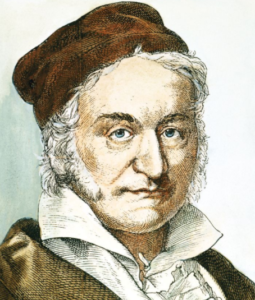
Carl Friedrich Gauss (CFG)
While all that stuff was happening, Carl Friedrich Gauss and Wilhelm Eduard Weber, (don’t ask me why all these people’s names are so long, we’ll call them CFG and WEW for short.) CFG, WEW, and Carl August von Steinheil (CAvS), started using codes with different word lengths in their telegraphs. What is so essential to Morse Code is time. The way you transfer Morse Code is by tapping out messages using plain taps and pauses. Longer pauses stand for different letters than shorter pauses while more taps stand for different letters than less taps.
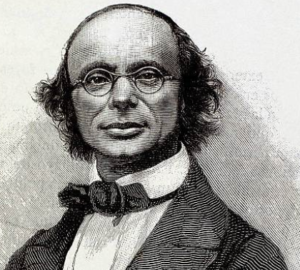
Wilhelm Eduard Weber (WEW)
In 1837, (we’re going back in time), these guys named William Cooke and Charles Wheatstone, (finally guys who don’t go by their first, middle, and last name!) began operating with electrical telegraphs which use electromagnets that were in the receivers. Since the 1800s, Europeans had decided to experiment with many different things, like battery-powered signaling systems, flipping magnetic flags, setting off alarms from long distances over wire and much more. Europeans have thought of numerous genius experiments that helped them devise telegraphic communication to something cool. The difference with systems making clicking sounds was that their system used pointed needles that went around the alphabet to tell what the letters were that were being transmitted.
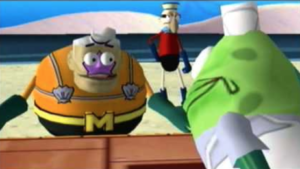
The fortunate Mister Barnacle
Now let me tell you about Mr. Barnacle and his family who lived in remote Alaska, in a happy little crustacean community. The year was 1912 and the Novarupta was about to explode and take the award of the biggest volcano eruption in the 20th century. While everybody else was sleeping, little Timmy went down to go and get some water from the pool. Out of the corner of his eye he saw smoke coming from the top of the local crag. He remembered what his father always told him when there was danger coming, go to the radio station that was just down the block and tap out a message: SOS, which stands for Save Our Souls, or Save Our Ship. Timmy quickly hurried down to the radio station in nothing but his pajamas and tapped out the message. All of sudden the Novarupta erupted with magma, producing 30 times the amount of Mount St. Helens. Everybody woke and Mr. Barnacle leapt out of bed, and his wife yelled “Where is little Timmy!?” Timmy ran back to the house and said, “Let’s go, help is coming!” They ran out of their house but every minute the lava was gaining on them. Mr. Barnacle scooped up Timmy but then dropped him. Timmy last thought before the lava hit him was, “I really hope there is a heaven to go to.” Timmy then waited for the lava to swallow him up, but death never came. Instead, a person in a barnacle car reached out and grabbed him and they were off. They scooped up Mr. Barnacle and his wife and they traveled safely away from the lava. After that Timmy went to live in Fog City (aka ‘frisco, aka San Francisco).Timmy never forgot what had happened that day. He lived to a ripe age of 99, exactly 90 years after that unforgettable day. Through his 99 years of life his proudest moment was tapping in that message: SOS.
In 1841, those same guys, Cooke and Wheatstone, (the guys that don’t go by their, first middle, and last names) constructed a telegraph that printed letters from the wheel of typefaces that was then hit by a hammer. Their machine was based off their 1840 telegraph and overall, worked well. The problem was that they couldn’t find any customers for their system so only two telegraph machines of their design were ever built. Samuel F.B. Morse had a background other than making the Morse Code and the first telegraph. Before all that stuff happened he was a young guy with a potential career in art. In 1811, he left with Washington Allston to England for an art trip. He created many masterpieces such as Dying Hercules and General Lafayette. Dying Hercules received some criticism because of its name. This is what Samuel Morse said about the General Lafayette painting. “It is a full-length, standing figure, the size of life.” Lafayette was the French leader who helped America win the Revolutionary War, so if you want to learn more about that, listen to Hamilton the musical. But Morse decided to forgo his path as an artist and made the telegraph in 1837 and Morse Code in 1844. We can all conclude that the world needs more people like Samuel F.B. Morse to make it a better place.

“Dying Hercules”… just another one of Samuel Morse’s hobbies, nbd.
